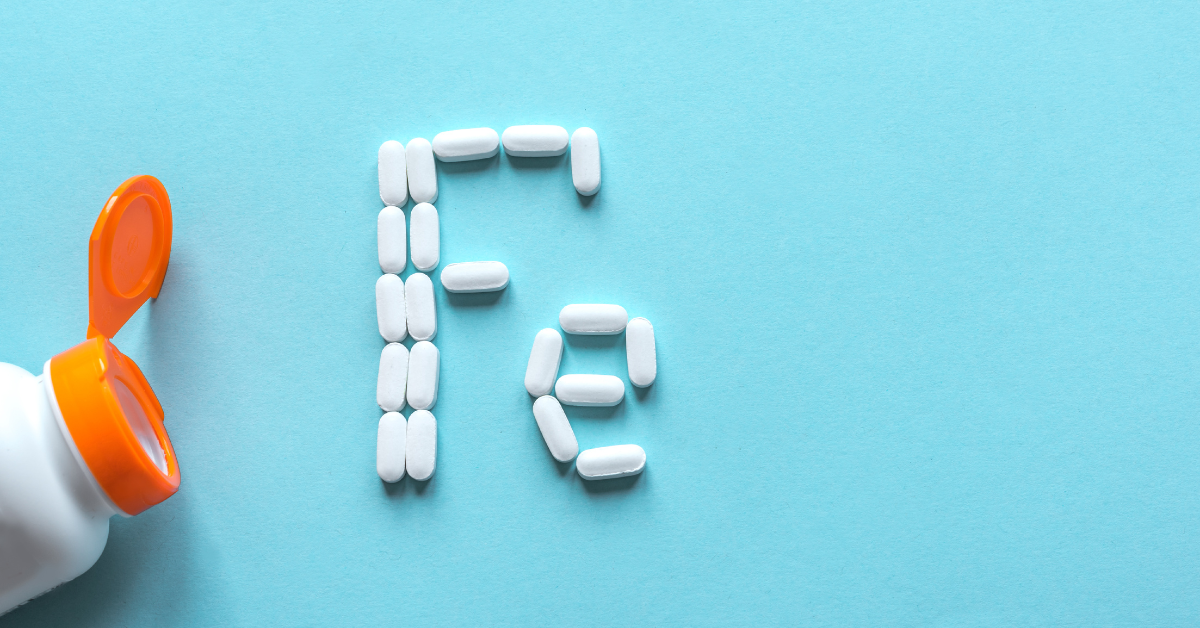Iron is a mineral that has multiple functions in the body. One of iron’s most important functions is its role in the production of red blood cells, which facilitates oxygen transport to the body’s cells. Two types of dietary iron exist; heme and non-heme iron. Heme iron is found in animal products, and non-heme iron is present in plant products (Harvard School of Public Health). Do you suspect you have an iron deficiency or would you like to monitor your iron levels? Homed-IQ’s Anemia Test is a laboratory-certified test that can be easily performed from home.
What is iron?
Iron is an essential nutrient found in food that is needed to form hemoglobin, a component of red blood cells that transports oxygen from the lungs to all parts of the body (NIH, 2022). Iron is also used to form certain proteins and enzymes and regulate other body processes.
Heme iron
Heme iron is only present in meat, chicken, seafood, and fish, and is the form of iron best absorbed by the body (Harvard School of Public Health). The amount of heme iron varies per animal product. For example, there is more iron in lamb and beef than in chicken or pork.
Non-heme iron
Non-heme iron is mainly present in plant foods, but also occurs in animal products. Foods that contain non-heme iron include whole-wheat bread, nuts, potatoes, and legumes. Additionally, several green vegetables, such as bok choy and spinach, also contain non-heme iron. Meat substitutes such as tofu and eggs also contain non-heme iron.
Why is iron important?
Iron is important for several body processes, such as the production of hemoglobin and red blood cells. By creating red blood cells that transport oxygen, iron helps support our energy levels and fitness. Iron also contributes to gastrointestinal processes, maintaining the immune system, and brain development in children (NIH, 2022).
What foods contain iron?
Iron is found in animal and plant products, or can be taken as a supplement in pill or liquid form. Foods that contain iron include:
- Meat, fish and chicken
- Eggs
- Leafy green vegetables
- Fortified breakfast cereals
- Legumes
- Nuts and seed
- Seaweed
Source: Cleveland Clinic, 2019
The amount of iron in food
The amount of iron in food varies, but is most abundant in meat and shellfish. A portion of beef contains an average of 2.5 mg of iron per 75 grams, while 3 oysters contain approximately 7 grams of iron (USDA, 2020). Fortified whole-grain products also can contain high amounts of iron, as can eggs, legumes, and leafy greens. It is also important to know that vitamin C improves iron absorption in the body. Therefore, eating foods containing vitamin C such as oranges, kiwis, or tomatoes with iron-rich foods can help boost iron levels.
How much iron do you need daily?
The amount of iron you need each day varies from person to person. For example, during pregnancy or menstruation, more iron is needed. Age, gender, and country specific guidelines also determine how much iron the body needs. The Dutch Health Council indicates that the recommended daily intake for iron is 15 milligrams for adult women and 11 milligrams for adult men (Vitamin Info). In general, women who menstruate require more iron than men and women who do not menstruate.
Can you have too much iron?
Yes, just as too little iron is bad for your health, too much iron can cause negative health effects. Overly high levels of iron in the body usually happen due to taking too many supplements, however the genetic disorder hemochromatosis can cause your body to store too much iron even with a normal diet. Too much iron increases the risk of type 2 diabetes, as well as liver problems and cardiovascular disease (Mayo Clinic). Taking more than 45 milligrams of iron at once can cause symptoms such as nausea, diarrhea, and stomach cramps. If you or your child accidentally ingests a large amount of iron supplements, seek medical care immediately.
Symptoms of an iron deficiency
There are a variety of symptoms associated with iron deficiency, such as pale skin and shortness of breath. For example, people with an iron deficiency may quickly become out of breath during physical activity. They may also feel tired or have restless legs. Other symptoms of iron deficiency include:
- Fatigue
- Heart Palpitations
- Dizziness
- Cold hands and feet
- Brittle nails
Source: Harvard School of Public Health
Consequences of iron deficiency
Lack of hemoglobin from iron deficiency can cause iron-deficiency anemia, which usually causes symptoms before it is diagnosed. Anemia is defined as a lack of healthy red blood cells. Hemoglobin is a component of red blood cells needed to carry oxygen from your lungs to your cells. During anemia, your body has to cope with less oxygen reaching its cells, which can cause fatigue and shortness of breath. The amount of iron or hemoglobin in the blood can be measured with a blood test. Anemia is defined as a Hb level below 8.0 mmol/l in men, and Hb below 7.5 mmol/l in women (Wouters et al., 2019).
When are iron supplements needed?
Iron supplements may be needed if an individual is not able to get sufficient iron from diet alone. People may require extra iron during menstruation, pregnancy, or after an operation where blood loss has occurred. People that do not consume animal products may also need to take an iron supplement, as non-heme iron is less readily absorbed by the body.
Treating iron deficiency
Iron deficiency can be treated by eating iron-rich foods or taking supplements, such as iron tablets. In case of a serious iron deficiency, iron tablets or IV infusions may be prescribed.
Sources
Food Sources of Iron | Dietary Guidelines for Americans. (2020). https://www.dietaryguidelines.gov/resources/2020-2025-dietary-guidelines-online-materials/food-sources-select-nutrients/food-1
Hemochromatosis – Symptoms and causes. (2020, December 30). Mayo Clinic. https://www.mayoclinic.org/diseases-conditions/hemochromatosis/symptoms-causes/syc-20351443
IJzer. (n.d.). Vitamine Informatie Bureau. https://www.vitamine-info.nl/alle-vitamines-en-mineralen-op-een-rij/ijzer/
Iron. (2020, October 19). The Nutrition Source. https://www.hsph.harvard.edu/nutritionsource/iron/
Iron in Your Diet. (n.d.). Cleveland Clinic. https://my.clevelandclinic.org/health/drugs/12871-iron-in-your-diet
Office of Dietary Supplements – Iron. (n.d.). https://ods.od.nih.gov/factsheets/Iron-Consumer/
Wouters, H. J., van der Klauw, M. M., de Witte, T., Stauder, R., Swinkels, D. W., Wolffenbuttel, B. H., & Huls, G. (2018). Association of anemia with health-related quality of life and survival: a large population-based cohort study. Haematologica, 104(3), 468–476. https://doi.org/10.3324/haematol.2018.195552




